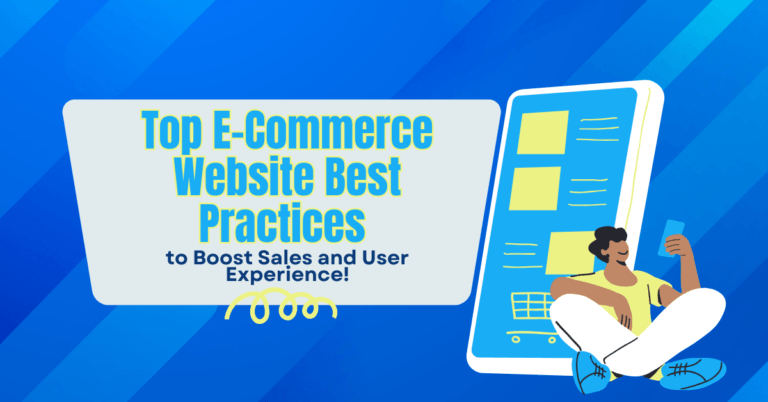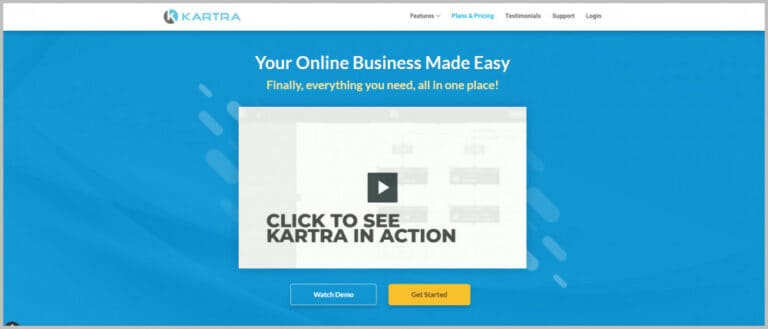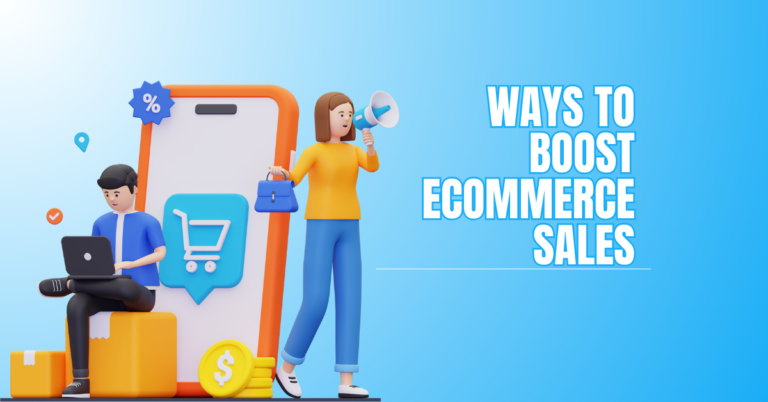Link Building For E-Commerce
The Ultimate Guide To Link Building For E-Commerce Success
Link building is essential for e-commerce success. It boosts your store’s visibility, drives targeted traffic, and improves search engine rankings.
Creating high-quality backlinks establishes trust and authority in your niche, helping your business stand out in a competitive marketplace.
This guide will explore actionable strategies and tips for mastering link building, ensuring long-term growth and success for your e-commerce store. Let’s dive into the path to success!
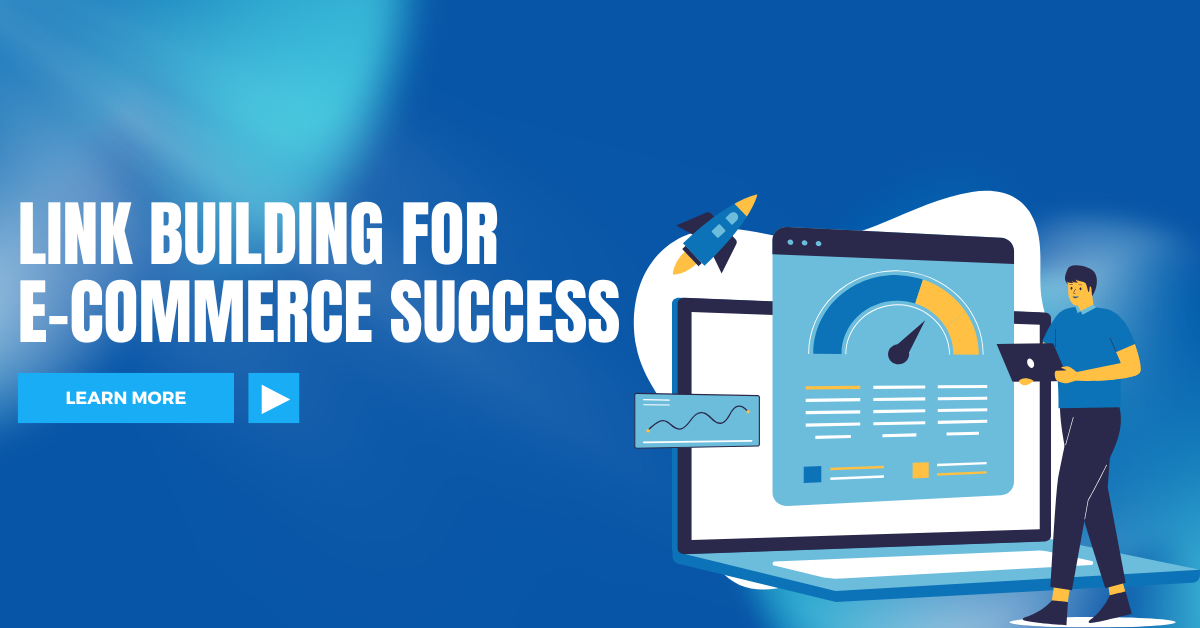
What Is E-commerce Link Building?
E-commerce link building generates high-quality backlinks to your online business to boost search engine rankings and organic traffic.
Link building is essential for e-commerce success. Backlinks serve as endorsements, signalling to search engines that your site is reliable and valuable. These links help improve your site’s authority and search engine rankings.
Effective strategies include collaborating with influencers, creating valuable content like infographics or guides, guest posting on niche blogs, and leveraging partnerships with suppliers or affiliates.
These approaches help build a network of authoritative links that enhance your store’s visibility and attract targeted customers.
Focusing on Link Building for E-commerce Success improves search engine performance and establishes trust with users and search engines, positioning your business as a leader in your industry. It’s an essential part of any e-commerce growth strategy.
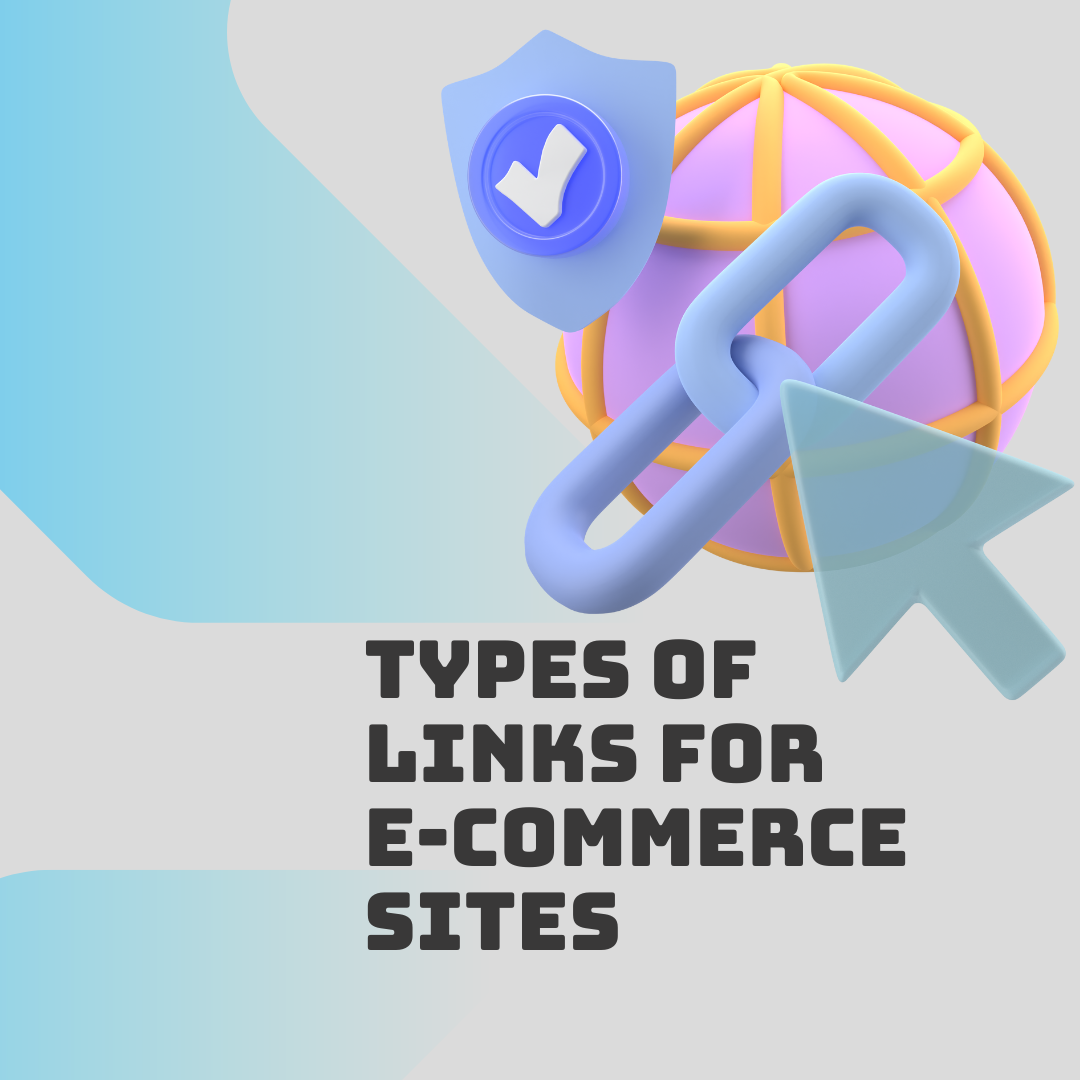
Types Of Links For E-Commerce Sites
For e-commerce websites, several links are essential for improving user experience, SEO, and site functionality. These links can be broadly categorized as follows:
1. Internal Links For E-Commerce
Navigation Links
These help users navigate between pages like categories, product listings, and search results. For example, a link from the homepage to the product categories (e.g., “Men's Clothing”, “Shoes”).
Related Product Links
Related product links display complementary or similar items on product pages, encouraging further browsing or upselling.
These links help increase cart value, improve product discovery, and enhance customer shopping experiences.
Breadcrumb Links
These show the user's current location on the website (e.g., Home > Category > Product) and help with easy navigation.
Footer Links
These are links to important pages like “Privacy Policy,” “Terms of Service,” or “Contact Us” that are typically placed in the footer section of the site.
Want to Start Making Money Online?
Try My #1 Recommendation Program!
2. External Links For E-Commerce
Affiliate Links
These links point to external sites or brands that partner with your e-commerce site. They may provide products or services that complement what you market.
Product Reviews
Product review links connect users to external review platforms or sites featuring customer feedback. These links build trust, enhance credibility, and give potential buyers additional insights to make informed purchasing decisions.
3. Anchor Links For E-Commerce
Jump Links
Jump links enable readers to move swiftly around a page by linking to relevant areas, such as product descriptions or reviews. These links enhance user experience by making information easily accessible and organized.
Are You Tired Of Scams?
Want to Start Making Money Online?
4. Product Links For E-Commerce
Product Pages
Each product page has a unique URL that allows users to access specific items. These links often include detailed information, images, pricing, and purchasing options.
Add-to-Cart Links
Add-to-basket links are buttons or hyperlinks on product pages that enable buyers to add items to their shopping cart without leaving the page. This feature streamlines the shopping experience, reducing friction and encouraging purchases.
Want to Find Out How To Start Your Home-Based Business?
Try My #1 Recommendation Platform!
5. Call-to-Action (CTA) Links For E-Commerce
Buy Now/Shop Now
Buy Now/Shop Now links take users to product purchase or checkout pages, bypassing unnecessary steps. These links create urgency, simplify the buying process, and boost conversions for quick decision-making.
Sign-Up / Subscribe
Sign-up / Subscribe links encourage users to sign up for newsletters or receive updates about discounts and promotions. These links help build an email list, fostering customer engagement and driving repeat visits to the site.
Checkout
Checkout links guide users to the final purchase stage, where they review their cart, input payment details, and complete the transaction. These links simplify the buying process, ensuring a seamless shopping experience.
6. Social Media Links For E-Commerce
Share Buttons
Share buttons allow users to effortlessly share products on social media platforms like Facebook, Twitter, Pinterest, and Instagram. This boosts visibility and encourages social engagement.
These links boost visibility, drive traffic, and encourage word-of-mouth marketing for your brand.
Social Proof
Social proof links connect users to the e-commerce site's social media profiles, showcasing customer reviews, testimonials, and community engagement. These links build trust, enhance credibility, and foster stronger brand connections.
Want To Learn How To Create Your Own Website And Online Business?
Try My #1 Recommendation Training And Hosting Platform!
7. Search Links For E-Commerce
Search Bar
A search bar lets users quickly find specific products, categories, or content on an e-commerce site. It improves navigation, enhances user experience, and helps customers locate desired items efficiently.
Filters
Filters allow users to narrow product selections by attributes like price, brand, size, or colour. These links enhance the shopping experience by making it easier to find relevant products quickly.
8. Transactional Links For E-Commerce
Order Tracking Links
Order tracking links give customers real-time updates on their order status. Users can click these links to monitor shipping progress and delivery estimates and receive notifications about delays or changes.
Payment Links
Payment links direct customers to secure payment gateways where they can complete their transactions. These links ensure the safe processing of payments and offer various options, such as credit cards, PayPal, or digital wallets.
9. SEO Links For E-Commerce
Canonical Links
Canonical links signal the preferred webpage version to search engines, preventing duplicate content issues. This helps consolidate ranking signals and ensures proper indexing, improving SEO and page visibility.
Redirect Links
Redirect links automatically guide users to a new page or product when the original URL changes or is unavailable. They prevent broken links and ensure a smooth browsing experience for visitors.
10. Legal And Informational Links For E-Commerce
Policy Links
Policy links provide customers with easy access to critical information such as privacy policies, shipping details, return guidelines, and terms of service. These links help ensure transparency and build trust with users.
FAQ Links
FAQ links direct users to a dedicated page where common customer inquiries are answered. These links help provide quick support, reducing the need for customer service interaction and enhancing user satisfaction.
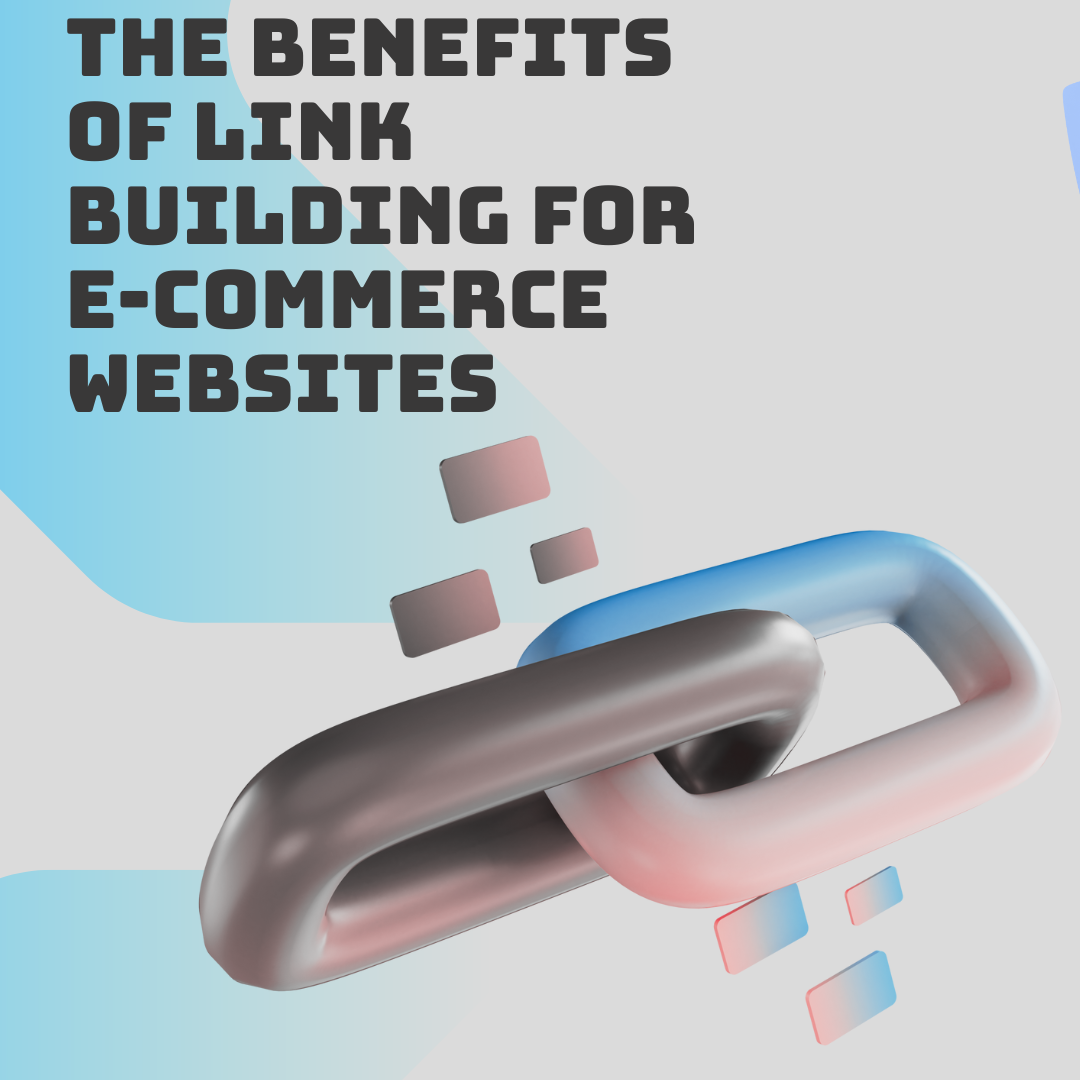
The Benefits Of Link Building For E-Commerce Websites
Link Building for E-commerce enhances SEO, boosts rankings, improves domain authority, drives referral traffic, and increases brand visibility, contributing to tremendous online success.
1. Boosting Search Engine Rankings
Search engines like Google use backlinks as a key ranking factor. High-quality, relevant links tell search engines that your e-commerce website is reliable and worthwhile. This increases your chances of ranking better for competitive keywords and generating organic traffic.
2. Improving Domain Authority
Domain Authority (DA) measures a website's credibility and ability to rank on search engines. Link building enhances DA by acquiring backlinks from authoritative, relevant sites.
These links improve your site's reputation by indicating to search engines that your material is dependable and valuable.
3. Driving Referral Traffic
Driving referral traffic through backlinks improves SEO and attracts visitors interested in your niche. These visitors are more likely to connect with your content and become customers, increasing revenues and better overall website performance.
4. Increasing Brand Visibility
Link building helps increase brand visibility by securing mentions and backlinks on authoritative industry blogs, review sites, and media outlets.
These endorsements expose your e-commerce store to a broader audience, boosting brand awareness and attracting potential customers who trust these sources.
5. Boosts Conversions And Sales
Higher search rankings from quality backlinks attract targeted traffic, increasing the likelihood of conversions. Visitors from trusted, relevant sources already have interest and confidence in your products, making them more likely to complete purchases and boosting overall sales performance.
6. Enhances Indexing By Search Engine
Backlinks enable search engine bots to crawl your website more efficiently, ensuring that all pages, including those in extensive product categories, are discovered and indexed. This improves your site's visibility in search results, leading to better rankings and traffic.
How To Build Links To An E-Commerce Website
Link Building for E-commerce is crucial for improving search engine rankings, driving traffic, and enhancing visibility. Here’s how you can build quality links to your e-commerce site:
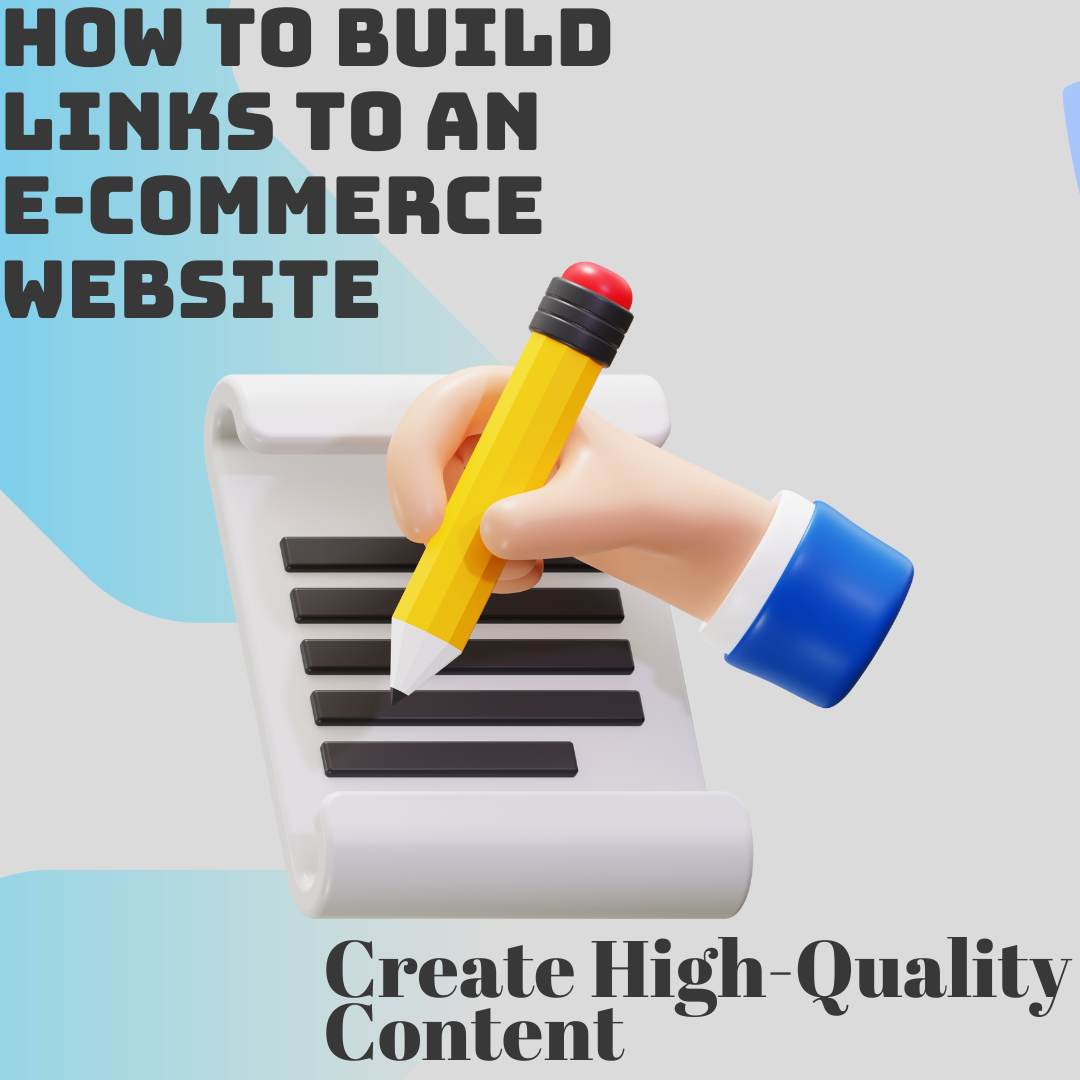
1. Create High-Quality Content For E-Commerce Sites
Product Guides And Reviews
Create comprehensive, informative product or category guides highlighting features, benefits, and comparisons. Bloggers and authority sites often link to these detailed resources.
How-To Tutorials
Create step-by-step instructional content that shows how to use or care for your products, such as “How to Choose the Right XYZ” or “How to Maintain Your XYZ.”
Infographics
Design eye-catching infographics that present valuable data, comparisons, or industry insights. When shared by other websites or blogs, these can attract backlinks.
Case Studies And Testimonials
Highlight customer success stories or in-depth case studies demonstrating how your products solved real problems, encouraging backlinks from industry sites.
2. Leverage Social Media For E-Commerce Sites
Share Valuable Content
Consistently share your blog posts, guides, and infographics on social media platforms like Instagram, LinkedIn, and Twitter to boost visibility and encourage backlinks from users and industry influencers.
Collaborations
Partner with influencers, bloggers, or businesses in your niche to create joint content or promotions. Influencers often share links with their audience, generating valuable backlinks to your website.
User-Generated Content
Encourage customers to share their opinions, images, and experiences with your items on social media or blogs. In return, request they link to your site for increased exposure and backlinks.
3. Reach Out For Guest Posting For E-Commerce Sites
Guest Blogging
Contribute valuable guest posts to authoritative industry blogs. In exchange, link your e-commerce website within the text, or your author profile to increase exposure and backlinks.
Collaborate with Industry Websites
Offer high-quality content or product reviews to reputable e-commerce websites in exchange for backlinks. This helps establish credibility and drives traffic from authoritative industry sources.
4. Utilize Online Directories And Resource Pages For E-Commerce Websites
Submit To Business Directories
List your e-commerce website on trusted directories like Yelp, Yellow Pages, and niche-specific platforms. This boosts local SEO and provides valuable backlinks from authoritative, industry-relevant sites.
Resource Pages
Identify pages on related websites where your product or service can be listed. Being featured as a recommended resource can earn valuable backlinks and increase your site’s visibility.
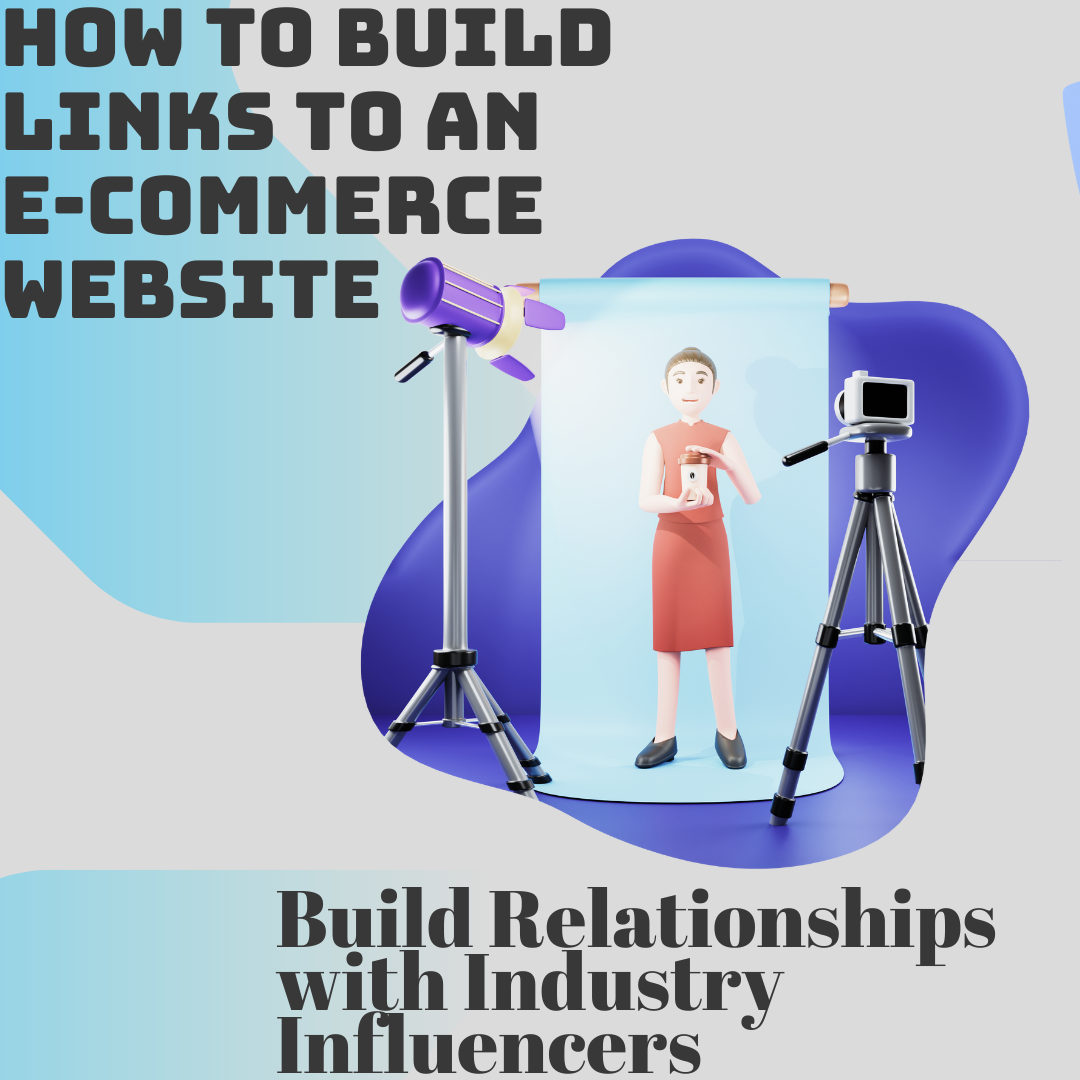
5. Build Relationships With Industry Influencers For E-Commerce Websites
Product Reviews
Send free products to bloggers or influencers in exchange for honest reviews. In return, request they include a link to your e-commerce site, driving traffic and earning valuable backlinks.
Expert Roundups
Contribute your expertise to industry expert roundups, offering insights or tips. In return, your website will receive a backlink, increasing visibility and positioning you as an authority in your niche.
6. Broken Link Building For E-Commerce Websites
Find Broken Links
Use tools like Ahrefs or Screaming Frog to locate broken links on authoritative websites in your niche. Offer your material as a replacement, resulting in excellent backlinks.
Offer Your Content As A Replacement
Contact site owners with broken links and suggest replacing them with relevant, high-quality content. This offers value and earns you a backlink.
7. Offer Discounts Or Freebies For Links For E-Commerce
Special Offers
Offer exclusive discounts or promotions to websites or bloggers in exchange for linking to your products in their content. This will incentivize backlinks and increase your e-commerce site's visibility.
Free Samples
Provide free product samples to bloggers or reviewers for an honest evaluation and a link to your website. This increases exposure and helps generate valuable traffic and backlinks.
8. Press And PR Outreach For E-Commerce Websites
Press Releases
Distribute press releases for product launches, awards, or company milestones to news outlets and media platforms. This can lead to backlinks from authoritative news sites, boosting your site’s credibility.
Journalist Outreach
Respond to journalist queries using HARO (Help a Reporter Out) platforms. Offer expert insights and get featured in articles with a backlink to your site.
9. Leverage Local SEO For E-Commerce Websites
Local Listings And Citations
List your e-commerce business on local directories and regional websites with accurate NAP (name, address, phone number) details. This will improve local SEO and provide valuable backlinks for visibility.
Collaborate With Local Influencers
Partner with local influencers or bloggers to create content about your products. Their mentions and backlinks from regional or community-based websites can boost your local SEO and visibility.
10. Create A Link-Worthy Resource Or Tool For E-Commerce Sites
Interactive Tools
Develop interactive tools like calculators, quizzes, or product comparison tools. These valuable resources can attract backlinks from other websites that reference them as helpful, driving traffic and enhancing SEO.
Free Downloads
Provide valuable resources such as ebooks, templates, or printables in exchange for backlinks to your site. This encourages users to share your content while boosting your site's SEO and visibility.
Avoiding Common Link-Building Mistakes
Effective link-building is crucial for e-commerce success, but it is also essential to avoid common mistakes. Focus on quality, relevance, and strategy to build sustainable links that improve SEO and drive traffic to your store.
1. Buying Links
Buying Links involves paying for backlinks, which violates Google's guidelines and can lead to penalties. For example, purchasing links from a low-quality directory site may temporarily boost rankings but risks severe SEO consequences and reduced trustworthiness. Focus on organic outreach.
2. Using Irrelevant Anchor Text
Using Irrelevant Anchor Text means using keywords that don't align with the linked content. For example, connecting the phrase “best shoes” to a blog about sustainable fashion would confuse users and search engines, reducing the link’s effectiveness and relevance.
3. Targeting Low-Quality Sites
Targeting Low-Quality Sites entails gaining backlinks from spammy or unrelated websites, which might hurt your SEO. For example, getting links from a questionable directory or a site with poor content can lead to penalties and lower rankings.
4. Neglecting Internal Links
Neglecting Internal Links can hinder site navigation and SEO. For example, failing to link a product page from a related blog post reduces users' opportunities to explore your store and limits link equity distribution across your site.
5. Ignoring Analytics
Ignoring Analytics means missing valuable insights on link-building performance. For example, without tracking through tools like Google Analytics or Ahrefs, you may not identify which backlinks are driving traffic or improving rankings, hindering the optimization of your strategy.
FAQ
1. Why Is Link-Building Important For E-Commerce?
Answer: Link building helps improve your website's SEO, driving more organic traffic, enhancing authority, and increasing sales and brand recognition.
2. How Can I Start Link Building For My E-Commerce Site?
Answer: Start by creating valuable content, contacting influencers, submitting to directories, and engaging in guest blogging or collaborations.
3. What Are High-Quality Backlinks?
Answer: High-quality backlinks come from reputable, relevant sites with high domain authority and trustworthiness, boosting your website’s SEO.
4. Is Link Building A One-Time Process?
Answer: No, link-building is an ongoing effort. Acquiring new, relevant backlinks is critical to maintaining and improving SEO rankings.
5. Can I Buy Backlinks For My E-Commerce Website?
Answer: While it's tempting, buying backlinks can result in search engine penalties. Instead, focus on earning links naturally through quality content and partnerships.
6. How Do Influencer Collaborations Help In Link Building?
Answer: Influencers often link back to your site in product reviews or mentions, providing valuable backlinks and exposing your brand to their audience.
7. How Long Does It Take To See Results From Link Building?
Answer: Link building is a long-term strategy. Depending on your industry and competition, it may take several months to significantly improve rankings and traffic. Patience and consistency are key.
Conclusion
In conclusion, successful link-building for E-commerce requires focusing on high-quality, relevant links that contribute to long-term growth and improved SEO performance.
Consistently providing valuable resources and building strong relationships with industry players will yield long-term SEO benefits.
To optimize your e-commerce growth, remember that link building is about quality as much as quantity. Concentrate on obtaining high-authority, pertinent connections that fit your niche.
I trust you enjoyed this article about The Ultimate Guide To Link Building For E-Commerce Success. Please stay tuned for more articles. Take care!
JeannetteZ
Want to Learn How to Build Your Own Home-Based Online Business And Start Making Money Online From Your Comfortable Couch?
Try Wealthy Affiliate!
Your Opinion Is Important To Me
Do you have thoughts, ideas, or questions? I would love to hear from you. Please leave me your questions, experiences, remarks, and suggestions about The Ultimate Guide To Link Building For E-Commerce Success in the comments below. You can also email me at Jeannette@WorkFromAnywhereInTheWorld.com.
Disclosure
This post may contain affiliate links. I earn from qualifying purchases as an Amazon Associate and other affiliate programs. Please read my full affiliate disclosure.
You may also enjoy the following articles:
Wealthy Affiliate Coupons For Premium Memberships
Wealthy Affiliate Review – Scam or Legit? The Truth Exposed
An Insider Wealthy Affiliate Review
Trending Products For Dropshipping
Affiliate Networks For Beginners: Unlocking Your Earning Potential
Top E-Commerce Website Best Practices To Boost Sales And User Experience




